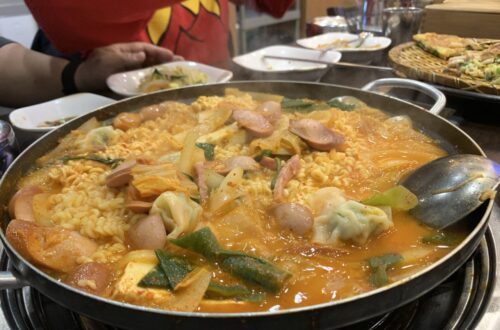
Welcome to the Budae Jjigae Chronicles
As part of my continuing research on dishes and their relation to political events in history, I have decided to take a closer look at a dish that is not only part of my Korean heritage but also one that I love. I was inspired to create this after watching Naengmyeon Rhapsody, an amazing show on Netflix that explores the history of Korean cold noodles and how various historical events have shaped the dish’s evolution.
So, I’d like to welcome you to a new section of the blog: The Budae Jjigae Chronicles. Budae Jjigae is a spicy Korean stew—budae refers to “military camp,” calling back to its origins during the Korean War, while jjigae refers to a type of stew. In English, the dish is commonly known as Army Stew.
In The Budae Jjigae Chronicles, I will explore the dish’s ingredients, history, and more.
To kick off this section, I want to introduce you to my favorite Budae Jjigae spot in Austin, Texas. In my opinion, Korea House serves Budae Jjigae that most closely resembles the version I had in Korea. With its creamy broth and variety of fresh ingredients, it is by far my favorite in the Austin area. If you are ever in the area, I highly recommend giving Korea House’s Budae Jjigae a try!

I am excited to explore how Budae Jjigae serves as living history—preserving Korea’s past while evolving with modern tastes and fusion—and to compare how the dish has been made across different eras to reflect the nation’s changing economic and cultural landscape.




